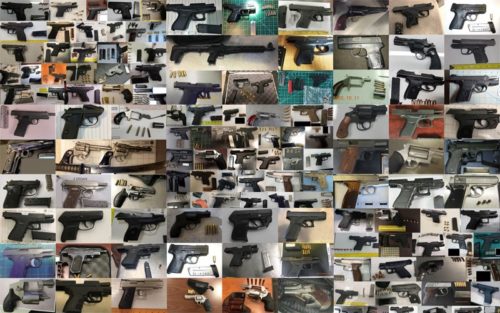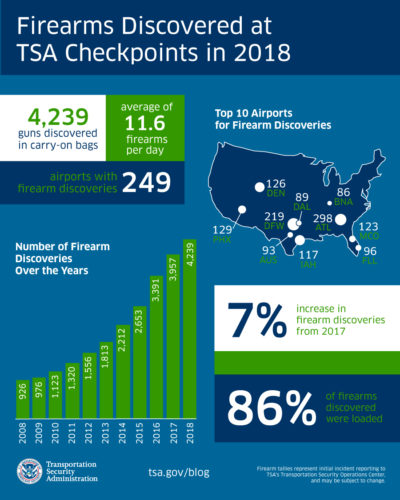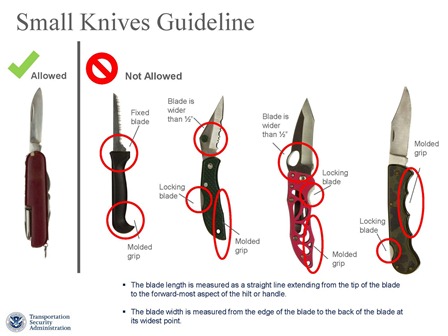
TSA’s Year in Review came out today with the (still somewhat unofficial) final stats on the number of guns TSA officers found in carry-on bags at airport checkpoints last year.
The total for 2018 is a record-setting 4,239 firearms found in carry-on bags at 249 of the more than 400 TSA-controlled airport checkpoints around the country.
That’s up more than 7 percent from the 3,957 firearms TSA officers found in carry-on bags in 2017.
And that averages out to 81.6 firearms a week and 11.6 firearms a day.
The break-down gets more alarming when we look at the stats on the number of guns found to be loaded.
Of the 4,239 firearms found last year, more than 86% (3,656) were loaded (another record) and almost 34% (1,432) of the firearms found had a round chambered.
Why do so many passengers show up at airports with guns?
“I think the biggest reason is that people go buy these things and then completely forget they have them, which is dangerous in its own right,” said aviation security expert Jeff Price, the owner of Leading Edge Strategies, “I imagine when they get the gun, at first they are always aware of it because they feel safer. Then, after a period of time, it works its way to the bottom of the bag and next thing that happens is its discovered at a screening checkpoint.”
Price also suspects that because more people are carrying guns these days and carry those guns in purses and laptops, they are aware they have the guns, “But in the hustle and confusion of preparing for a trip, they forget to take the gun out. “

TSA’s Year in Review also lists the top 10 airports for firearm discoveries in 2018.
Hartsfield-Jackson Atlanta International Airport (ATL) the Top 10 list with 298 firearms found. (253 loaded.) That’s an increase of 53 compared to 2017.
ATL also set the record for the airport with the most firearms discovered in one month: In August 2018, 32 firearms were found at ATL checkpoints.
Here’s the rest of TSA’s Top 10 list of airports for firearms discoveries in 2018:
Dallas/Fort Worth International Airport (DFW): 219 (193 loaded)
Phoenix Sky Harbor International Airport (PHX): 129 (120 loaded)
Denver International Airport (DEN): 126 (95 loaded)
Orlando International Airport (MCO): 123 (112 loaded)
George Bush Intercontinental Airport (IAH): 117 (115 loaded). Some good news here: this is a decrease of 25 compared to 2017.
Fort Lauderdale-Hollywood International Airport (FLL): 96 (80 loaded)
Austin-Bergstrom International Airport (AUS): 93 (76 loaded)
Dallas Love Field Airport (DAL): 89 (83 loaded)
Nashville International Airport (BNA): 86 (80 loaded)
In a year when TSA also screened a record number of travelers (813.8 million; a 5.5 percent increase over 2017), the agency’s officers also found a wide variety of prohibited items and ‘artfully concealed’ objects other than firearms in carry-on bags, including inert grenades, a bottle of lighter fluid, fireworks and knife combs.
TSA’s week in review also notes the loss in 2018 of Curtis “Blogger Bob” Burns, the charmingly corny TSA employee who chronicled the agency’s odd finds on the TSA blog, on Twitter and on Instagram. Burns is featured in quirky videos highlighting TSA Top 10 Most Unusual Finds in 2016 and in 2017.
TSA’s Year in Review promises that a video highlighting 2018’s most unusual finds will be released soon.
